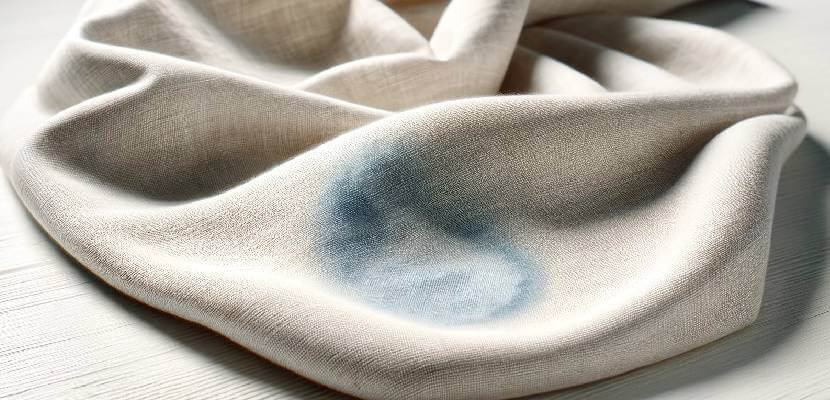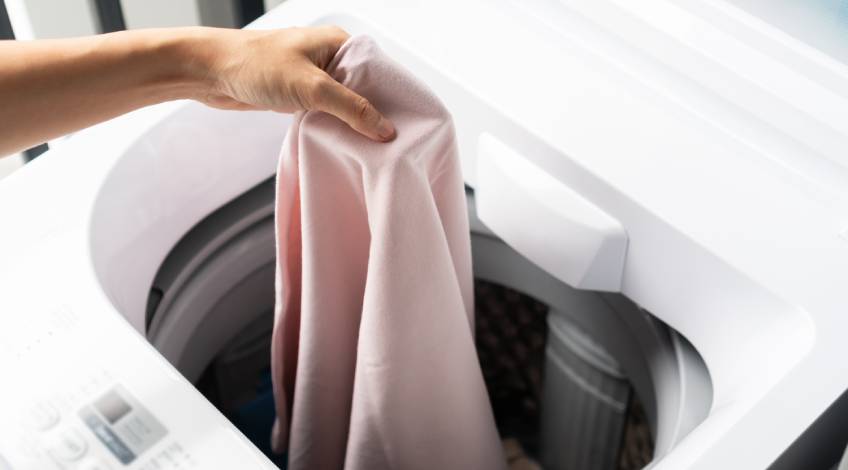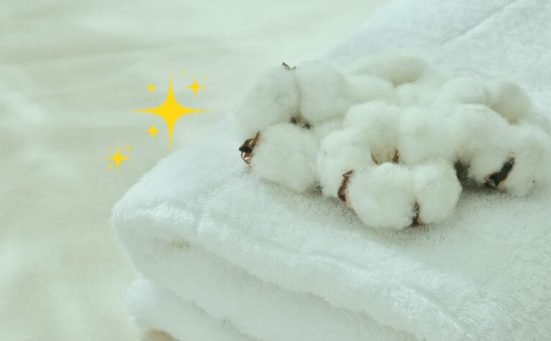
Can You Put Fabric Softener Straight Into A Washing Machine’s Drum?
When it comes to doing laundry, we all want our clothes to come out smelling fresh and feeling soft. Fabric softener is a popular product that many of us use to achieve the cosy feeling and clean scent on our garments.
Usually, we put fabric softener in the compartment of our washer, but is it okay to pour it directly into the drum? To put it simply, no, we don’t recommend putting fabric softener straight into the washing machine’s drum as it will not make the product more effective. Instead, it may result in stains, an inefficient cleaning cycle, and worse, may even ruin your garments in the long run.
Let’s have a closer look into why it’s best to put laundry products in the right compartment, how to use fabric softener correctly, and extra tips to get the most out of it.
Reasons Why You Shouldn’t Put Fabric Softener In Your Washer’s Drum
Fabric softeners are designed to make your garments feel softer and reduce static cling. This is possible as it works by coating their fibres with a thin layer of chemicals that gives the clothing their softness once the cycle is done.
Here are the main reasons why you should avoid putting fabric softener directly in your washing machine’s drum:
It May Stain Your Clothes
Fabric softener is meant to make your clothes soft and smell good, but if you pour it directly on them, it can leave stains. This happens because its consistency is pretty thick and can stick to your clothes instead of mixing with the water.

It May Affect Your Washer’s Cleaning Efficiency
As we have said earlier, fabric softener is designed to coat the fibres of your clothes to make them feel softer. If you put it in early in the cycle, it can leave a residue not only on your clothes but also on the inside of the drum and other parts of the machine.
Hence, placing it directly in the drum can interfere with the washing machine’s ability to clean your garments effectively. Over time, this build-up can affect the machine’s performance, leading to a less efficient clean and potentially causing malfunctions.
It May Ruin Your Fabrics
Using fabric softener directly in the drum leads to it being too concentrated, which can harm certain types of fabrics. For example, delicate materials can become damaged over time if they’re constantly exposed to high concentrations of fabric softener.
As time passes, your fabrics will be less absorbent due to excessive coating, which makes them more difficult to clean.
It May Not Equally Distribute Among Your Clothing
For fabric softener to function as it should, it must be evenly distributed throughout the wash. Pouring it directly into the drum typically results in uneven distribution, which means some parts of your laundry may end up softer or more fragranced than others.

The Proper Way Of Using Fabric Softener
Modern washing machines come in two main types: front loaders and top loaders. Each type has its own designated compartment and in most cases, includes one for fabric softener as well. These compartments make sure that the washing machine dispenses the products at the best time in the wash cycle.
Let’s learn how to use fabric softener on front loaders, top loaders, and even when hand washing your fabrics!
For Front-Loader Washing Machines
Using a front-loading washing machine? Here’s how to use fabric softener for best results:
- Use the right amount of product
Make sure to read the instructions on the product for how much you need to use for your load size. Most fabric softeners will have a line or marker on their cap to indicate the amount you’ll need to use for different load sizes. Make sure to not overuse it as too much softener will leave residue on your clothes. - Add to the fabric softener dispenser
Check the user manual of your machine to know where the fabric softener compartment is. Most drawers have three compartments and the fabric softener compartment is often labelled with a flower, star, or number 3 symbol. - Start the cycle
Once you’re done adding your detergent, you can close the drawer and start your laundry cycle.
TIP: Always read your user manual as the manufacturer may use a different symbol to indicate where to put specific laundry products.
For Top-Loader Washing Machines
Using a top-loading washing machine? If it has a fabric softener compartment, you can follow the same instructions above. If it doesn’t have a designated dispenser, here’s what you can do:
- Measure the fabric softener
Start by measuring the correct amount of fabric softener for your load size using the cap of the bottle. It’s important to use the recommended amount to avoid residue build-up on your clothes and inside the washing machine. - Add the fabric softener during the rinse cycle
If your washer doesn’t have a fabric softener dispenser, manually add the product during the rinse cycle. Do this by pausing the machine once it starts to rinse your garments, then adding the softener directly to the water. - Continue the cycle
Once you’re done adding the fabric softener, resume the cycle and continue your laundry session.
TIP: Diluting your fabric softener before pouring it into the washer reduces the risk of staining your garments.
For Handwashing
If you don’t have a washing machine or simply want to lessen your carbon footprint, you may be handwashing your garments. Of course, you can still use fabric softener in the process.
All you need to do is:
- Wash your clothes
Wash your clothes with laundry detergent in a basin, sink, or bathtub filled with water at the temperature recommended on the clothes’ care labels. Gently agitate the clothes with your hands to help remove dirt and stains. After thoroughly washing, rinse the clothes in clean water to remove any soap residue. - Dilute the fabric softener
Measure the recommended amount of fabric softener for the size of your wash load using the cap of the bottle. Dilute the measured softener in a basin of clean water. The amount of water should be enough to cover your clothes when they are re-added to the basin. Follow the dilution instructions on the fabric softener bottle if available. - Soak your clothes in the fabric softener
Once the fabric softener is diluted, submerge your freshly rinsed clothes in the solution. Ensure all items are fully immersed and gently agitate them with your hands to distribute the softener evenly. Allow to soak for at least 10 minutes. - Rinse
Rinse your clothes in cold water. If the fabric softener does not require rinsing, feel free to skip this step. - Dry the clothes on a clothesline
Gently wring out the clothes to remove excess water then hang them on a clothesline to dry.
WARNING: Avoid exposing your delicate fabrics to direct sunlight, as it can fade or damage them.
Additional Tips When Using Fabric Softener
We wouldn’t be CheckAppliance if we didn’t leave you with extra tips you can use to maximise your laundry sessions, would we?
Here you go:
- Check the product’s label
Remember to always read the fabric softener label for any specific instructions or warnings, especially regarding the use on different fabric types. - Mix fabric softener and water
If your machine doesn’t have a spot for fabric softener, you can mix it with water in a bucket and add it to the rinse cycle yourself. This helps avoid stains and ensures it spreads out evenly. - Clean your detergent drawer
Every now and then, give your washing machine a clean, especially where you put detergent and fabric softener. This stops gunk from building up and keeps your machine running smoothly. - Skip certain fabrics
Some materials, like wool, silk, microfiber towels, and athletic clothes, don’t do well with fabric softener. It’s best to skip it for these items so they can keep doing their job. - Go natural
If you’re worried about the chemicals that may trigger your allergies, you can use natural alternatives like vinegar during the rinse cycle. It can make your clothes soft without the harsh stuff found in some fabric softeners.
Pouring fabric softener directly into the drum of your washing machine might seem like a time-saver, but it can cause more trouble than it’s worth. By using it the right way, you can keep your clothes soft and fresh without any extra hassle.
Have tips to share? Feel free to leave a comment below!
SEE ALSO: Can You Put Fabric Softener And Vinegar Together In A Washing Machine?
Frequently Asked Questions
Putting fabric softener in the drum can lead to stains on your clothes and affect your washing machine’s efficiency by leaving a residue inside the drum and on its other parts.
To use fabric softener without a tray, you can measure the correct amount for your load size and add it to the rinse cycle by manually pausing the machine. Diluting the fabric softener with water before adding it can also reduce the risk of staining your garments.
In a top loader without a dedicated fabric softener compartment, you add fabric softener by measuring the appropriate amount for your load size using the cap of the bottle, then manually adding it to the rinse cycle by pausing the machine and pouring it directly into the water.
You should not put fabric softener in at the beginning of the wash because it can coat the fibres of your clothes too early, which prevents the detergent from cleaning them effectively and can leave a residue on both your clothes and inside the machine.
Distilled white vinegar is a good alternative for fabric softener. It can naturally soften your clothes without the use of harsh chemicals found in traditional fabric softeners. Just add it to the rinse cycle in place of fabric softener.
Also, follow us on Pinterest ...



